127 results found for 'Force'. Prev |1|2|3|4|5|6 | Next | View 100 per page
Low relevance matches: 61 other results may be of interest to you. Show low relevance matches
Forces and Moving - The way objects move depends on a variety of factors including their size and shape ACSSU033 Year 2 Physical Sciences
Forces and Moving - A push or a pull affects how an object moves or changes shape ACSSU076 Year 4 Physical Sciences
Forces and Moving - Forces can be exerted by one object on another through direct contact or from a distance ACSSU117 Year 7 Physical Sciences
Forces and Machines - Change to an object’s motion is caused by unbalanced forces, including Earth’s gravitational attraction, acting on the object ACSSU229 Year 10 Physical Sciences
Forces and Motion - The motion of objects can be described and predicted using the laws of physics ACSCH018 Year 11 Chemical fundamentals
Properties and structure of atoms - Atoms can be modelled as a nucleus surrounded by electrons in distinct energy levels, held together by electrostatic forces of attraction between the nucleus and electrons; atoms can be represented using electron shell diagrams (all electron shells or val ACSCH032 Year 11 Chemical fundamentals
Properties and structure of materials - The characteristic properties of metals (for example, malleability, thermal conductivity, electrical conductivity) are explained by modelling metallic bonding as a regular arrangement of positive ions (cations) made stable by electrostatic forces of attra ACSCH056 Year 11 Molecular interactions and reactions
Intermolecular forces and gases - The shapes of molecules can be explained and predicted using three dimensional representations of electrons as charge clouds and using valence shell electron pair repulsion (VSEPR) theory ACSCH059 Year 11 Molecular interactions and reactions
Intermolecular forces and gases - Data from chromatography techniques (for example, thin layer, gas and highperformance liquid chromatography) can be used to determine the composition and purity of substances; the separation of the components is caused by the variation of strength of the ACSCH060 Year 11 Molecular interactions and reactions
Intermolecular forces and gases - The behaviour of gases, including the qualitative relationships between pressure, temperature and volume, can be explained using kinetic theory ACSCH065 Year 11 Molecular interactions and reactions
Aqueous solutions and acidity - The solubility of substances in water, including ionic and molecular substances, can be explained by the intermolecular forces between species in the substances and water molecules, and is affected by changes in temperature ACSPH060 Year 11 Linear Motion and Waves
Linear motion and force - Uniformly accelerated motion is described in terms of relationships between measurable scalar and vector quantities, including displacement, speed, velocity and acceleration ACSPH061 Year 11 Linear Motion and Waves
Linear motion and force - Representations, including graphs and vectors, and/or equations of motion, can be used qualitatively and quantitatively to describe and predict linear motion ACSPH062 Year 11 Linear Motion and Waves
Linear motion and force - Vertical motion is analysed by assuming the acceleration due to gravity is constant near Earth’s surface ACSPH063 Year 11 Linear Motion and Waves
Linear motion and force - Newton’s Three Laws of Motion describe the relationship between the force or forces acting on an object, modelled as a point mass, and the motion of the object due to the application of the force or forces ACSPH064 Year 11 Linear Motion and Waves
Linear motion and force - Momentum is a property of moving objects; it is conserved in a closed system and may be transferred from one object to another when a force acts over a time interval ACSPH065 Year 11 Linear Motion and Waves
Linear motion and force - Energy is conserved in isolated systems and is transferred from one object to another when a force is applied over a distance; this causes work to be done and changes to kinetic and/or potential energy of objects ACSPH066 Year 11 Linear Motion and Waves
Linear motion and force - Collisions may be elastic and inelastic; kinetic energy is conserved in elastic collisions ACSPH102 Year 12 Gravity and electromagnetism
Electromagnetism - Electrostatically charged objects exert a force upon one another; the magnitude of this force can be calculated using Coulomb’s Law ACSPH108 Year 12 Gravity and electromagnetism
Electromagnetism - Magnets, magnetic materials, moving charges and currentcarrying wires experience a force in a magnetic field; this force is utilised in DC electric motors ACSPH100 Year 12 Gravity and electromagnetism
Gravity and motion - When an object experiences a net force of constant magnitude perpendicular to its velocity, it will undergo uniform circular motion, including circular motion on a horizontal plane and around a banked track ACSCH031 Year 11 Chemical fundamentals
Properties and structure of materials - The properties of ionic compounds (for example, high melting point, brittleness, ability to conduct electricity when liquid or in solution) are explained by modelling ionic bonding as ions arranged in a crystalline lattice structure with forces of attract ACSPH098 Year 12 Gravity and electromagnetism
Gravity and motion - The vector nature of the gravitational force can be used to analyse motion on inclined planes by considering the components of the gravitational force (that is, weight) parallel and perpendicular to the plane ACSPH103 Year 12 Gravity and electromagnetism
Electromagnetism - A positively charged body placed in an electric field will experience a force in the direction of the field; the strength of the electric field is defined as the force per unit charge ACSPH104 Year 12 Gravity and electromagnetism
Electromagnetism - Point charges and charged objects produce an electric field in the space that surrounds them; field theory attributes the electrostatic force on a point charge or charged body to the presence of an electric field ACSPH105 Year 12 Gravity and electromagnetism
Electromagnetism - When a charged body moves or is moved from one point to another in an electric field and its potential energy changes, work is done on or by the field
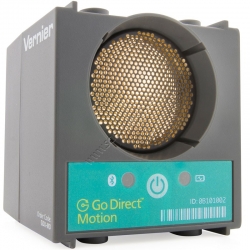



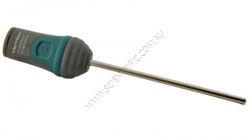


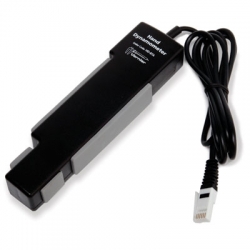
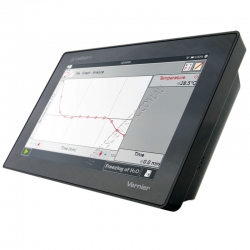


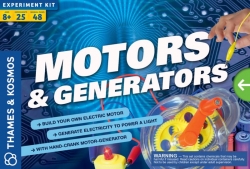
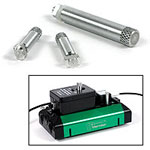


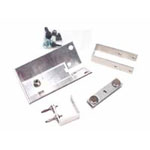

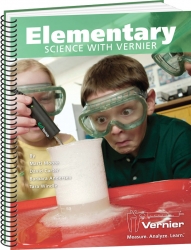

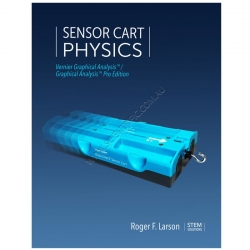
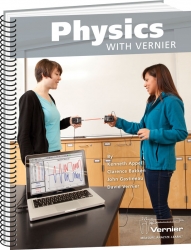

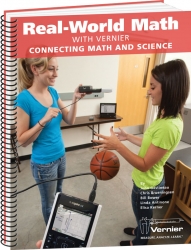
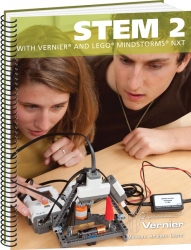
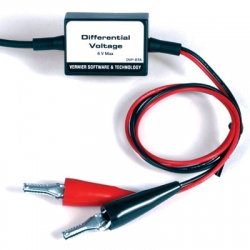
127 results found for 'Force'. Prev |1|2|3|4|5|6 | Next | View 100 per page
Low relevance matches: 61 other results may be of interest to you. Show low relevance matches
Curriculum resources related to 'Force'
ACSSU005 Foundation Physical SciencesForces and Moving - The way objects move depends on a variety of factors including their size and shape ACSSU033 Year 2 Physical Sciences
Forces and Moving - A push or a pull affects how an object moves or changes shape ACSSU076 Year 4 Physical Sciences
Forces and Moving - Forces can be exerted by one object on another through direct contact or from a distance ACSSU117 Year 7 Physical Sciences
Forces and Machines - Change to an object’s motion is caused by unbalanced forces, including Earth’s gravitational attraction, acting on the object ACSSU229 Year 10 Physical Sciences
Forces and Motion - The motion of objects can be described and predicted using the laws of physics ACSCH018 Year 11 Chemical fundamentals
Properties and structure of atoms - Atoms can be modelled as a nucleus surrounded by electrons in distinct energy levels, held together by electrostatic forces of attraction between the nucleus and electrons; atoms can be represented using electron shell diagrams (all electron shells or val ACSCH032 Year 11 Chemical fundamentals
Properties and structure of materials - The characteristic properties of metals (for example, malleability, thermal conductivity, electrical conductivity) are explained by modelling metallic bonding as a regular arrangement of positive ions (cations) made stable by electrostatic forces of attra ACSCH056 Year 11 Molecular interactions and reactions
Intermolecular forces and gases - The shapes of molecules can be explained and predicted using three dimensional representations of electrons as charge clouds and using valence shell electron pair repulsion (VSEPR) theory ACSCH059 Year 11 Molecular interactions and reactions
Intermolecular forces and gases - Data from chromatography techniques (for example, thin layer, gas and highperformance liquid chromatography) can be used to determine the composition and purity of substances; the separation of the components is caused by the variation of strength of the ACSCH060 Year 11 Molecular interactions and reactions
Intermolecular forces and gases - The behaviour of gases, including the qualitative relationships between pressure, temperature and volume, can be explained using kinetic theory ACSCH065 Year 11 Molecular interactions and reactions
Aqueous solutions and acidity - The solubility of substances in water, including ionic and molecular substances, can be explained by the intermolecular forces between species in the substances and water molecules, and is affected by changes in temperature ACSPH060 Year 11 Linear Motion and Waves
Linear motion and force - Uniformly accelerated motion is described in terms of relationships between measurable scalar and vector quantities, including displacement, speed, velocity and acceleration ACSPH061 Year 11 Linear Motion and Waves
Linear motion and force - Representations, including graphs and vectors, and/or equations of motion, can be used qualitatively and quantitatively to describe and predict linear motion ACSPH062 Year 11 Linear Motion and Waves
Linear motion and force - Vertical motion is analysed by assuming the acceleration due to gravity is constant near Earth’s surface ACSPH063 Year 11 Linear Motion and Waves
Linear motion and force - Newton’s Three Laws of Motion describe the relationship between the force or forces acting on an object, modelled as a point mass, and the motion of the object due to the application of the force or forces ACSPH064 Year 11 Linear Motion and Waves
Linear motion and force - Momentum is a property of moving objects; it is conserved in a closed system and may be transferred from one object to another when a force acts over a time interval ACSPH065 Year 11 Linear Motion and Waves
Linear motion and force - Energy is conserved in isolated systems and is transferred from one object to another when a force is applied over a distance; this causes work to be done and changes to kinetic and/or potential energy of objects ACSPH066 Year 11 Linear Motion and Waves
Linear motion and force - Collisions may be elastic and inelastic; kinetic energy is conserved in elastic collisions ACSPH102 Year 12 Gravity and electromagnetism
Electromagnetism - Electrostatically charged objects exert a force upon one another; the magnitude of this force can be calculated using Coulomb’s Law ACSPH108 Year 12 Gravity and electromagnetism
Electromagnetism - Magnets, magnetic materials, moving charges and currentcarrying wires experience a force in a magnetic field; this force is utilised in DC electric motors ACSPH100 Year 12 Gravity and electromagnetism
Gravity and motion - When an object experiences a net force of constant magnitude perpendicular to its velocity, it will undergo uniform circular motion, including circular motion on a horizontal plane and around a banked track ACSCH031 Year 11 Chemical fundamentals
Properties and structure of materials - The properties of ionic compounds (for example, high melting point, brittleness, ability to conduct electricity when liquid or in solution) are explained by modelling ionic bonding as ions arranged in a crystalline lattice structure with forces of attract ACSPH098 Year 12 Gravity and electromagnetism
Gravity and motion - The vector nature of the gravitational force can be used to analyse motion on inclined planes by considering the components of the gravitational force (that is, weight) parallel and perpendicular to the plane ACSPH103 Year 12 Gravity and electromagnetism
Electromagnetism - A positively charged body placed in an electric field will experience a force in the direction of the field; the strength of the electric field is defined as the force per unit charge ACSPH104 Year 12 Gravity and electromagnetism
Electromagnetism - Point charges and charged objects produce an electric field in the space that surrounds them; field theory attributes the electrostatic force on a point charge or charged body to the presence of an electric field ACSPH105 Year 12 Gravity and electromagnetism
Electromagnetism - When a charged body moves or is moved from one point to another in an electric field and its potential energy changes, work is done on or by the field
Products related to 'Force'

Vernier Go Direct Elementary Standard Package
VERNIER GO DIRECT ELEMENTARY STANDARD PACKAGE
Designed for use by a group of 2-4 students, the Vernier Go Direct Elementary Standard Package includes:
• GDX-MD Vernier Go Direct Motion Detector
•
Order code: GDP-EL-DX

Vernier Go Direct Physiology Standard Package
VERNIER GO DIRECT HUMAN PHYSIOLOGY STANDARD PACKAGE
Designed for use by a group of 2-4 students, the Vernier Go Direct Human Physiology Standard Package includes:
• GDX-EKG Vernier Go Direct EKG Sensor
• ...
Order code: GDP-HP-DX

Vernier Go Direct Physiology Starter Package
VERNIER GO DIRECT PHYSIOLOGY STARTER PACKAGE
Encourage your students to explore the physiology of various human organ systems with these Vernier Go Direct Sensors and accessories. Collect, share and analyze sensor data with Vernier's free Graphical Analysis software. The ...
Order code: GDP-HP-ST

Vernier Go Direct Middle School Science Package
VERNIER GO DIRECT MIDDLE SCHOOL SCIENCE PACKAGE
Designed for use by a group of 2-4 students, the Vernier Go Direct Middle School Deluxe Package includes:
• GDX-MD Vernier Go Direct Motion Detector
•
Order code: GDP-MS-DX

Vernier Go Direct Exploring Physical Science Package
VERNIER GO DIRECT EXPLORING PHYSICAL SCIENCE PACKAGE
Explore various physical science topics in basic chemistry and physics from matter and energy to motion and forces with your Years 4-8 Middle School students. Collect, share and analyze sensor data with Vernier's free G...
Order code: GDP-MS-PS

Vernier Go Direct Physics Standard Package
VERNIER GO DIRECT PHYSICS STANDARD PACKAGE
Designed for use by a group of 2-4 students, the Vernier Go Direct Physics Standard Package includes:
• GDX-MD Vernier Go Direct Motion Detector
•
Order code: GDP-PHY-DX

Vernier Go Direct Physics Starter Package
VERNIER GO DIRECT PHYSICS STARTER PACKAGE
Designed for use by a group of 2-4 students, the Vernier Go Direct Physics Starter Package includes:
• GDX-MD Vernier Go Direct Motion Detector
•
Order code: GDP-PHY-ST

Vernier Hand Dynamometer
VERNIER HAND DYNAMOMETER
Vernier's strain-gauge based isometric dynamometer can be used to measure grip strength and to perform muscle fatigue studies. The Hand Dynamometer can be used alone or in combination with EKG recordings for detailed studies of muscular activity. ...
Order code: HD-BTA



Vernier LabQuest 3 Middle School Package
VERNIER LABQUEST 3 MIDDLE SCHOOL PACKAGE
Designed for use by a group of 2-4 students, the Vernier LabQuest 3 Middle School Package includes:
• LABQ3 Vernier LabQuest 3 Interface
•
Order code: LQ3-MS-DX

Vernier LabQuest 3 Physics Standard Package
VERNIER LABQUEST 3 PHYSICS STANDARD PACKAGE
Designed for use by a group of 2-4 students, the Vernier LabQuest 3 Physics Standard Package includes:
• LABQ3 Vernier LabQuest 3 Interface
•
Order code: LQ3-PHY-DX

Vernier LabQuest 3 Physics Starter Package
VERNIER LABQUEST 3 PHYSICS STARTER PACKAGE
Designed for use by a group of 2-4 students, the Vernier Labquest 3 Physics Starter Package includes:
• LABQ3 Vernier LabQuest 3 Interface
•
Order code: LQ3-PHY-ST

Motors and Generators
Electric motors and generators are in countless devices, appliances and vehicles we use every day. They are an essential technology in our modern world. With this kit you can conduct 25 experiments to learn how an electric motor converts electricity into motion and how an electri...
Order code: 665036



Vernier Accessory Kit
VERNIER DYNAMICS SYSTEM ACCESSORY KIT
The Vernier Dynamics System Accessory Kit consists of two small and one large t-nut fasteners. The t-nuts are used to attach accessories such as a Dual Range Force Sensor or the Low-g Accelerometer to the discontinued Vernier Dynamics...
Order code: ACC-VDS

Vernier Bumper and Launcher Kit
VERNIER BUMPER AND LAUNCHER KIT
The Bumper and Launcher Kit contains accessories for experiments involving the Vernier Dual-Range Force Sensor, Vernier Wireless Dynamics System and the Vernier Dynamics Cart and Track System. The accessories include two hoop springs of dif...
Order code: BLK

Vernier Friction Accessory
VERNIER FRICTION ACCESSORY
A friction pad to fit Vernier's metal Dynamics Carts in the discontinued VDS Vernier Dynamics System.
The friction pad enables the metal carts to move under a very consistent friction force and setting the friction amount is as simple as turnin...
Order code: PAD-VDS

Vernier Air Track Adaptor
VERNIER AIR TRACK ADAPTER
The Vernier Air Track Adapter allows the Vernier Dual-Range Force Sensor or Vernier Go Direct Force and Acceleration Sensor to be mounted on the end of an air track for collision studies.
The adapter is compatible with most air tracks distrib...
Order code: ATA-DFS

Vernier Photogate / DFS Rod
VERNIER PHOTOGATE AND FORCE SENSOR ROD
A replacement rod for the one supplied with the Vernier Go Direct Force Sensor, Vernier Dual-Range Force Sensor, Vernier Go Direct Photogate, Vernier Photogate and Vernier Wireless Dynamics Sensor System.
Order code: ACC-ROD

Elementary Science with Vernier
ELEMENTARY SCIENCE WITH VERNIER
Elementary Science with Vernier is a lab book containing 43 fun and engaging experiments for students in grades 2-6. Activities investigate the topics of temperature, motion, force, magnetism, light, electricity and pressure. Also included ...
Order code: EWV

Elementary Science with Vernier - Electronic Version
ELEMENTARY SCIENCE WITH VERNIER - ELECTRONIC
Elementary Science with Vernier contains 43 fun and engaging experiments for students in grades 2-6. Activities investigate the topics of temperature, motion, force, magnetism, light, electricity and pressure. Also included are...
Order code: EWV-E

Vernier Sensor Cart Physics
VERNIER SENSOR CART PHYSICS
The Vernier Sensor Cart Physics lab manual features 23 guided inquiry investigations. It provides a stimulating structure to explore introductory through to senior high school concepts in kinematics, Newton’s laws of motion, forces and conserva...
Order code: HSB-SCP-E

Physics with Vernier
PHYSICS WITH VERNIER
Physics with Vernier is a lab book containing 35 experiments in mechanics, sound, light, electricity and magnetism. This book has a wide variety of experiments for Motion Detectors, Force Sensors, Light Sensors, Magnetic Field Sensors, Microphones, Cu...
Order code: PWV

Physics with Vernier - Electronic Version
PHYSICS WITH VERNIER - ELECTRONIC
Physics with Vernier is a lab book containing 35 experiments in mechanics, sound, light, electricity and magnetism. This book has a wide variety of experiments for Motion Detectors, Force Sensors, Light Sensors, Magnetic Field Sensors, Mi...
Order code: PWV-E

Real-World Math with Vernier - Electronic Version
REAL-WORLD MATH WITH VERNIER - ELECTRONIC
Real-World Math with Vernier is a digital lab book containing 32 activities covering concepts such as linear, quadratic and periodic functions, statistics, systems of equations and many more. The activities are written for use wit...
Order code: RWV-E

STEM 2 with Vernier and LEGO MINDSTORMS NXT
Discontinued. Only 3 still available.
STEM 2 WITH VERNIER AND LEGO MINDSTORMS NXT ™
STEM 2 with Vernier and LEGO MINDSTORMS NXT™ is Vernier's second book of projects and labs in collaboration with LEGO. It has activities using a Dual-Range Force Sensor, Magnetic Field Sensor, Voltage Probe and Gas Press...
Order code: STEM2

Vernier LabQuest Mini Physics Starter Package
VERNIER LABQUEST MINI PHYSICS STARTER PACKAGE
Designed for use by a group of 2-4 students, the Vernier LabQuest Mini Physics Starter Package includes:
• LQ-MINI Vernier LabQuest Mini Interface
•
Order code: LM-PHY-ST
127 results found for 'Force'. Prev |1|2|3|4|5|6 | Next | View 100 per page


